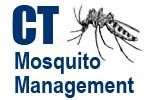About Us
The management of mosquitoes in Connecticut is a collaborative effort involving the Department of Energy and Environmental Protection (DEEP), the Connecticut Agricultural Experiment Station (CAES), and the Department of Public Health (DPH), together with the Department of Agriculture and the Department of Pathobiology at the University of Connecticut (UCONN). These agencies are responsible for monitoring and managing the state’s mosquito population levels to reduce the potential public health threat of mosquito-borne diseases.
The program was created by a legislative act (PA 97-289) in 1997 to monitor and control the spread of eastern equine encephalitis (EEE), a potentially deadly disease. EEE is a virus that is present in nature and is cycled in the wild bird population by certain species of bird-feeding mosquitoes. The virus has no effect on wild birds; however, it can be fatal to humans, horses, and commercial exotic fowl (e.g., pheasants, emus). In Connecticut, outbreaks of EEE have occurred sporadically among horses and domestic pheasants since 1938. The first human case of EEE infection in Connecticut was identified in 2013.
In 1999, West Nile virus (WNV) was discovered in New York, New Jersey, and Connecticut. The outbreak, in which 7 humans and 6 horses died in New York and hundreds of birds died within the three states, was the first documentation of this virus in the Western Hemisphere. Unlike EEE, WNV is new to the Americas and native birds had not developed a natural immunity to this virus. Hence, a large proportion of the birds bitten by WNV-infected mosquitoes died. Historically, sporadic outbreaks of WNV have occurred in parts of Africa and Eurasia since 1937. The virus is similar to the virus that causes St. Louis encephalitis (SLE) and causes similar symptoms in humans. Although WNV causes fatal illness in a smaller proportion of cases than EEE, its greater potential to cause large outbreaks makes it an important health concern.
Content last updated on January 15, 2019.

